Pulhapanzak Falls, Honduras
The river that drops over Pulhapansak Falls is born not far away, bubbling from the ground as one of many drains from Lake Yojoa, which has no natural surface exits (they did dig a canal which then goes into a 2 meter pipe that fuels a hydroelectric plant nearyby).
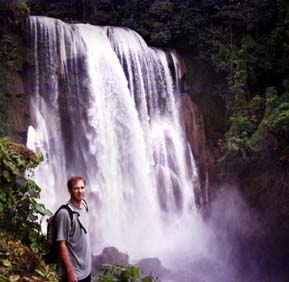
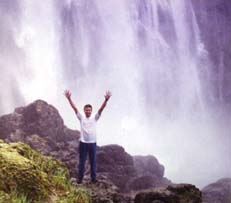
I thought we were just coming to take a look around, take a deep breath, and head on over to Lake Yojoa for sailing, rowing or jet skiing. The day turned out far better than just that.
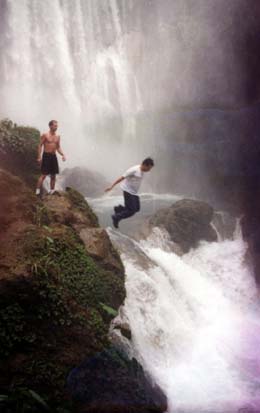
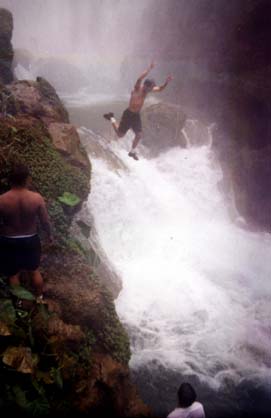
After climbing down a steep hillside with help of rocks and tree roots, we explored behind and below the falls, entering a cave large enough to hold perhaps a dozen people, and at times letting smaller parts of the falls come hammering down against our heads and backs, always inducing the fear that any moment the water would fall even harder and knock us to our knees in the waist-deep water.
Above, Shaun & Christian jump from one of two cliffs below the falls. The fall was farther than expected, which was mostly noticed in how long it took to regain the surface after plunging in. After two jumps, Shaun remembered that he no longer wore contacts (got Lasik surgery two years back) and could open his eyes underwater. He jumped again and this time opened his eyes for the ascent, watching the green light and black shadows slosh back and forth in the rough current. Beautiful!
The camera wasn't officially waterproof and much of the film was ruined, but we feel lucky that these shots came out!
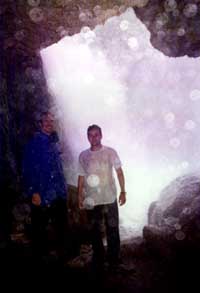
Behind the falls. Not the smaller cave, though, that one had a narrow entrance and was very dark within.
In the flat area above the falls are a few mounds that are easily recognizable (if you've seen them before) as Mayan ruins. These ones have not been excavated and are not large. They're less than ten feet tall and probably have an empty storage space within, though after the many earthquakes that have occurred over the last 1,600 years, there's no knowing how intact everything still is.